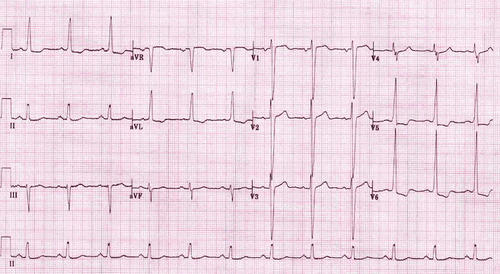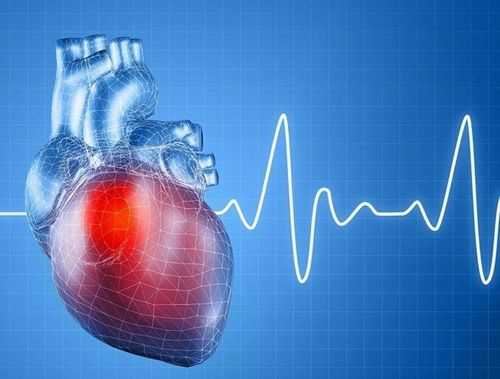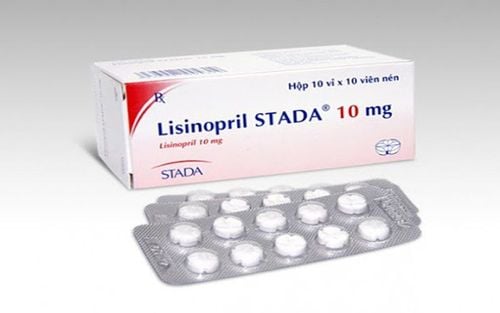This is an automatically translated article.
The article is professionally consulted by Master, Doctor Nguyen Tung Hoanh - Interventional Cardiologist - Department of Resuscitation - Emergency - Vinmec Nha Trang International General Hospital.Cardiac ventricular hypertrophy, in which left ventricular hypertrophy is considered a constant threat to the cardiovascular health of hypertensive patients. This condition can cause many dangerous complications such as heart failure, myocardial infarction, and even death if not treated early.
1. What is ventricular hypertrophy in the heart?
Left ventricular hypertrophy is the most common pathology of ventricular hypertrophy in the heart. Left ventricular hypertrophy is the enlargement and thickening of the left ventricular wall - the lower chamber, on the left side of the heart, responsible for pumping oxygen-rich blood from the heart to nourish all organs in the body.
Left ventricular thickening is often the result of long-standing hypertension that is not well controlled. As the heart has to work harder to overcome the resistance of the vascular wall, the heart muscle wall will become thicker, the size of the heart chamber will also increase due to the dilation of the heart muscle. At this time, the heart muscle wall will lose its elasticity and cannot pump enough blood to supply the body's needs, eventually leading to heart failure.
2. Symptoms of left ventricular hypertrophy
Symptoms of left ventricular hypertrophy can include:
Heaviness in the chest, chest pain, often after physical activity. Shortness of breath. Tired. A feeling of fast and pounding heartbeats in your chest (palpitations) or heart fibrillation. Dizziness or fainting. In particular, chest pain is one of the common symptoms of left ventricular hypertrophy.
If the patient has the following serious symptoms, go to a cardiologist immediately:
Angina that persists for more than 5 minutes. Severe shortness of breath. Repeated dizziness or unconsciousness. In particular, patients should go for regular health check-ups if they have a habit of smoking or have high blood pressure or obesity.

Đau thắt ngực kéo dài hơn 5 phút là dấu hiệu của dày thất trái
3. Causes of left ventricular hypertrophy
Hypertension is the most common cause of left ventricular hypertrophy. It can also be caused by some of the following conditions:
Aortic valve stenosis: The narrowed aortic valve puts extra pressure on the left ventricle in pumping blood into the aorta. Hypertrophic cardiomyopathy: This causes the heart muscle to thicken abnormally, making it difficult for the heart to pump blood. Risk factors:
Age: Older people have a higher risk of developing left ventricular hypertrophy. Weight: Being overweight increases the risk of hypertension and left ventricular hypertrophy. Family history: Genetic factors are associated with the development of left ventricular hypertrophy. Have diabetes. Gender: Women with hypertension have a higher risk of developing left ventricular hypertrophy than men with the same blood pressure measurements.
4. Is left ventricular thickening dangerous?
The thickening of the left ventricle can change the structure and functioning of the heart, causing the electrical system to be disturbed, the heart muscle is gradually weakened, no longer able to pump blood to the body, and finally lead to many serious complications such as:
Heart failure. Arrhythmia . Local myocardial ischemia. Stops blood supply to the heart, causing a heart attack. Stroke. Sudden cardiac arrest and death.
5. Diagnosis of left ventricular hypertrophy
To diagnose left ventricular hypertrophy, the doctor will first ask about the medical history, then check the patient's blood pressure, heart function, and perform a number of tests, including:
Electrocardiogram
This method helps to record the electrical signals of the heart, thereby helping the doctor to detect abnormal heart function and an increase in left ventricular muscle tissue, called left ventricular thickening on the electrocardiogram.

Hình ảnh dày thất trái trên điện tâm đồ
Echocardiogram
Echocardiogram images can show thickened muscle tissue in the left ventricle, blood flow through the heart during each stroke, and abnormalities associated with left ventricular hypertrophy, such as stenosis motherboard .
Magnetic Resonance Imaging (MRI)
Magnetic resonance imaging (MRI) can show images of the heart to help diagnose left ventricular hypertrophy.
6. Methods to treat left ventricular thickening
The treatment of left ventricular hypertrophy aims to limit the development of thickening of the left ventricle and prevent complications, which can be treated with medication or surgery depending on the cause.
7. Prevents thickening of the left ventricle
Medicines for high blood pressure can help prevent thickening of the left ventricle. The treating doctor may prescribe a number of drugs to the patient such as:
ACE inhibitors that help widen blood vessels, lower blood pressure, improve blood flow and reduce the workload of the heart. Angiotesin II receptor antagonists have similar effects to ACE inhibitors. Beta blockers can block the effects of the hormone adrenaline, slow your heart rate, and lower your blood pressure. Calcium channel blockers can help lower a patient's blood pressure. Some diuretics can facilitate better blood circulation, lowering blood pressure. If the cause of left ventricular thickening is aortic valve disease, surgery may be needed to repair or replace the aortic valve.
Ths.BS. Nguyen Tung Hoanh has experience and strength in Cardiovascular Resuscitation - Emergency: Hypertension, Peripheral Vascular Diseases, acute and chronic coronary artery diseases, ..in addition, the doctor also treats other diseases. Comorbidities such as: Diabetes, Hyperthyroidism, Hypothyroidism, Kidney diseases, respiratory diseases, etc. Currently, Dr. Hoanh is an interventional cardiologist at the Department of Resuscitation - Emergency - Vinmec Nha Trang International General Hospital.
For detailed advice on cardiovascular diseases, please come directly to Vinmec health system or register online HERE.













